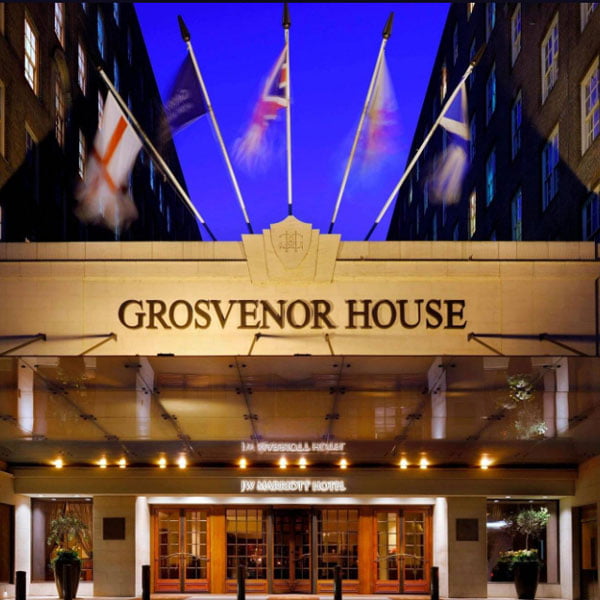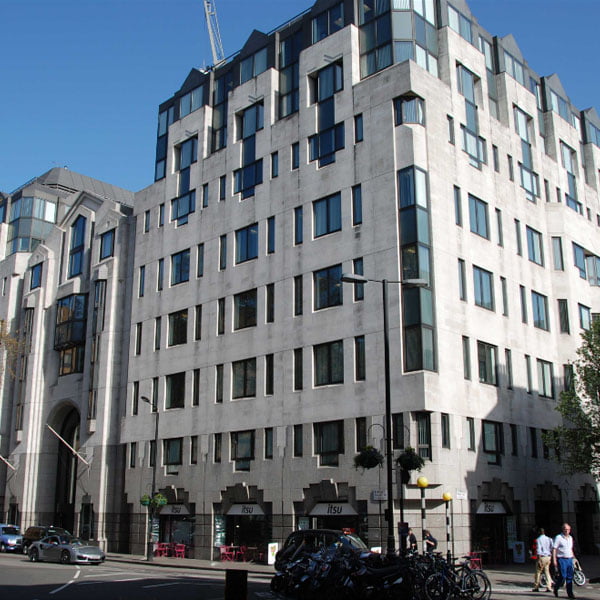The neighbourhood of Mayfair is full of rich history and cultural significance. This upscale area, known for its elegance and opulence, has a fascinating past that dates back to the 17th century. Initially, it was a greenfield site owned by the Grosvenor family. Over time, Mayfair evolved from a rural suburb into a fashionable district, attracting influential individuals from various fields, such as politics, art, and literature.
In this article, we will explore the fascinating world of historical houses in Mayfair, their architectural grandeur, the remarkable residences, and their captivating histories.
Lansdowne House: A Celebration of Architectural Grandeur
Lansdowne House, an architectural wonder, holds a commanding presence in the esteemed Mayfair district. This impressive estate enthrals spectators with its meticulously crafted details and sheer magnificence. The brainchild of celebrated architect Robert Adam, the house is a testament to the ingenuity of neoclassical design. Throughout its colourful history, the Lansdowne House was the home to William Petty-Fitzmaurice, otherwise known as the 1st Marquess of Lansdowne. Formerly the Earl of Shelburne, Petty-Fitzmaurice was an influential British statesman who played a pivotal role in historical events. He ardently supported American independence during the American Revolutionary War. He was a key figure in negotiating the Treaty of Paris in 1783, which officially acknowledged the independence of the United States.
Lansdowne House also served as the home to Harry Gordon Selfridge: The prominent American retail magnate and innovator, and the founder of the legendary Selfridges department store, Harry Gordon Selfridge, once counted The Lansdowne Club as his abode. Selfridge revolutionised the retail sector with his pioneering merchandising techniques and left an enduring imprint on the commercial landscape.
In the 18th century, Lansdowne House transcended its initial purpose as a residence. It’s ornate interiors and extraordinary collection of art morphed it into a cultural epicentre for intellectual and artistic assemblies. The stately salons and luxurious rooms bore witness to vibrant discourse and interaction among some of the greatest minds of the time.
In the modern era, Lansdowne House remains an iconic masterpiece of architectural prowess in the heart of Mayfair. Conceived by Robert Adam, it exemplifies the beauty of neoclassical design and mesmerises visitors with its delicate intricacies and timeless sophistication.
Grosvenor House: The Epitome of Elegance and History
Positioned on the prestigious Park Lane, Grosvenor House stands as a symbol of Mayfair’s regal heritage. Erected in the 18th century, it was the dwelling of the affluent Grosvenor lineage. Two notable individuals who have resided in Grosvenor House are:
- The Duke and Duchess of Westminster: Grosvenor House, being a property of the Grosvenor family, has served as the London residence for the Duke and Duchess of Westminster. The current Duke of Westminster, Hugh Grosvenor, and his wife, Natalia Grosvenor, live in this stately residence. As members of one of Britain’s wealthiest and most influential families, they continue the legacy of the Grosvenor dynasty.
- Elizabeth Taylor: The iconic Hollywood actress Elizabeth Taylor is also among the notable individuals who lived in Grosvenor House. Known for her exceptional talent and beauty, Taylor graced the halls of this grand mansion during her visits to London. Her association with Grosvenor House adds a touch of glamour and star power to its history.
The stately mansion, originally designed by architect Thomas Cundy Senior, encapsulates an ageless allure with its opulent interiors and significant art collections.
As the generations passed, the house transformed from a private residence to a public venue. Following the sale of the property post the death of the 2nd Duke of Westminster in 1953, the Forte Group reimagined the mansion as a luxury hotel, retaining its inherent grandeur.
The Grosvenor House Hotel is globally recognised under the JW Marriott umbrella. It upholds its illustrious past while embracing the modern era, offering lavish dining, hosting celebrated events such as the annual Grosvenor House Art and Antiques Fair, and providing a tangible testament to Mayfair’s luxurious past and vibrant present.


Spencer House: An Iconic Tapestry of History and Elegance
Spencer House, one of London’s finest private palaces, is a timeless testament to the charm of 18th-century British architecture. This grand edifice, designed by eminent architects John Vardy and James ‘Athenian’ Stuart, stands in the noble St. James’s district.
Built between 1756 and 1766 for John Spencer, 1st Earl Spencer, the House has since been a proud witness to history and the lives of the affluent Spencer family. Its opulent rooms, furnished with exquisite art and antiques, have welcomed illustrious personalities, from British royalty to foreign dignitaries.
Among the notable residents, Lady Diana Spencer, later Princess of Wales, is perhaps the most recognised, owing to her international fame and endearing personality. This connection enhances the historical allure of the House, binding its legacy with the evolution of the British monarchy.
In the modern era, after a painstaking ten-year restoration undertaken by RIT Capital Partners, who leased the House in 1986, Spencer House has regained its 18th-century grandeur. Today, it serves as an extraordinary venue for prestigious events and exhibitions while housing a renowned collection of paintings and furniture.
Spencer House remains a privately-owned palace open to the public, retaining the splendour of its original design while adapting to contemporary needs. It is a striking reminder of Britain’s architectural heritage, its social history, and the remarkable individuals who have graced its halls, continuing to charm and captivate visitors in the 21st century.
Apsley House: A Chronicle of Historical Grandeur and Prestige
Apsley House, fondly known as ‘Number 1, London’, is an emblematic edifice of historical significance nestled at the heart of the capital. Designed by neoclassical architect Robert Adam, it was built in the late 18th century as the residence of Baron Apsley, from whom the house derives its name.
This stately mansion came into the possession of Arthur Wellesley, 1st Duke of Wellington, in 1817. The ‘Iron Duke’, renowned for his triumph against Napoleon at the Battle of Waterloo, resided here until his demise in 1852. The House’s connection with the Duke, a formidable figure in British history, amplifies its cultural and historical prestige.
Throughout the years, Apsley House has welcomed numerous distinguished guests, with its regal rooms playing host to a bevy of lavish social gatherings. Notably, the annual Waterloo Banquet, a commemorative event honouring the Duke’s legendary victory, was held here, making it a focal point of British high society.
In the contemporary era, Apsley House continues to dazzle with its neoclassical elegance. Now managed by English Heritage, it operates as a museum housing an impressive collection of artwork and personal artefacts of the Duke, including gifts presented by grateful European monarchs following Napoleon’s defeat.
Today, Apsley House stands as a captivating beacon of Britain’s vibrant past, its architectural grandeur, and its celebrated residents. By seamlessly integrating historical reverence with modern utility, it continues to enchant visitors, offering a unique glimpse into the life and times of the Duke of Wellington.
Hertford House: An Engaging Nexus of History and Cultural Heritage
Hertford House, an elegant Georgian mansion located in Manchester Square, London, has a distinguished history steeped in architectural grandeur and cultural richness. Constructed in the 18th century, it was designed by esteemed architects Joshua Brown and Robert Adam, showcasing their exquisite finesse in blending functionality with aesthetic appeal.
The House was the London residence of the Marquesses of Hertford for several generations. Among its notable occupants, the 4th Marquess, Sir Richard Wallace, particularly stands out. A prominent art collector, Sir Richard significantly enhanced the prestige of the House with his eclectic and impressive collection of artworks.
In the modern era, Hertford House is better known as the Wallace Collection, named after Sir Richard. In 1897, Lady Wallace, Sir Richard’s widow, bequeathed the House and its remarkable collection to the British nation. Since then, it has been a public museum, offering a glimpse into 18th and 19th-century aristocratic life.
Today, Hertford House continues to shine as a beacon of London’s cultural landscape. Its synthesis of architectural beauty, history, and the extensive Wallace Collection ensures it remains a captivating destination for art connoisseurs and history enthusiasts worldwide.
Stratton House: A Historical Gem Infused with Elegance and Distinction
Stratton House, a Georgian jewel situated in London’s Piccadilly, is a distinctive blend of historical splendour and architectural refinement. Crafted in the 18th century by distinguished architect John Rocque, the house served as a prestigious residence to a lineage of nobility.
Initially owned by John Stratton, it eventually passed to the Rothschild family in 1875, adding a chapter of financial magnates to its illustrious history. The Rothschilds, renowned for their contribution to European banking, brought a vibrant, cosmopolitan influence to the House.
In the 20th century, Stratton House took on a commercial role, with offices, clubs, and companies occupying its grand rooms. Despite the passage of time and changes in purpose, the House has retained its quintessential Georgian architectural charm.
Today, Stratton House has been beautifully restored and serves as the headquarters of British multinational mining company Anglo American plc. The building continues to bear testament to its rich history while effortlessly adapting to the needs of a modern, dynamic workspace. This harmonious blend of past and present ensures Stratton House remains a treasured landmark, preserving London’s architectural heritage and the fascinating narratives of its distinguished occupants.
Conclusion
Mayfair’s historic houses offer a fascinating glimpse into the past and the lives of the influential individuals who resided within their walls. From the grandeur of Grosvenor House to the artistic treasures of Hertford House, each mansion has its own unique story to tell. Exploring these architectural marvels allows us to immerse ourselves in the rich history and cultural heritage of Mayfair.
FAQs
- Are these historic houses open to the public?
Yes, some of these houses are open to the public, allowing visitors to explore their magnificent interiors and learn about their history.
- Can I visit Apsley House?
Yes, Apsley House is open to the public as a museum, offering visitors a chance to discover the Duke of Wellington’s fascinating life and the treasures he collected.
- Are there any notable events held at Spencer House?
Spencer House often hosts exclusive events and private functions, providing a unique and elegant setting for special occasions.
- How can I access the Wallace Collection at Hertford House?
The Wallace Collection at Hertford House is open to the public, allowing art enthusiasts to marvel at its extensive art collection free of charge.
- Can I visit Lansdowne House?
Lansdowne House, now known as Lansdowne Club, is an exclusive social venue and member only. However, its architectural splendour can be admired from the outside.
















